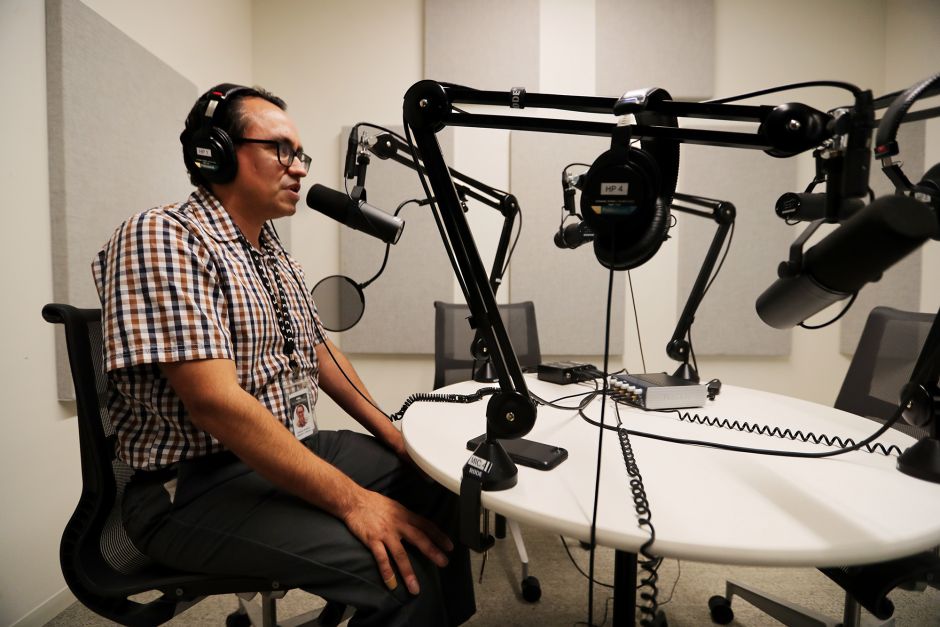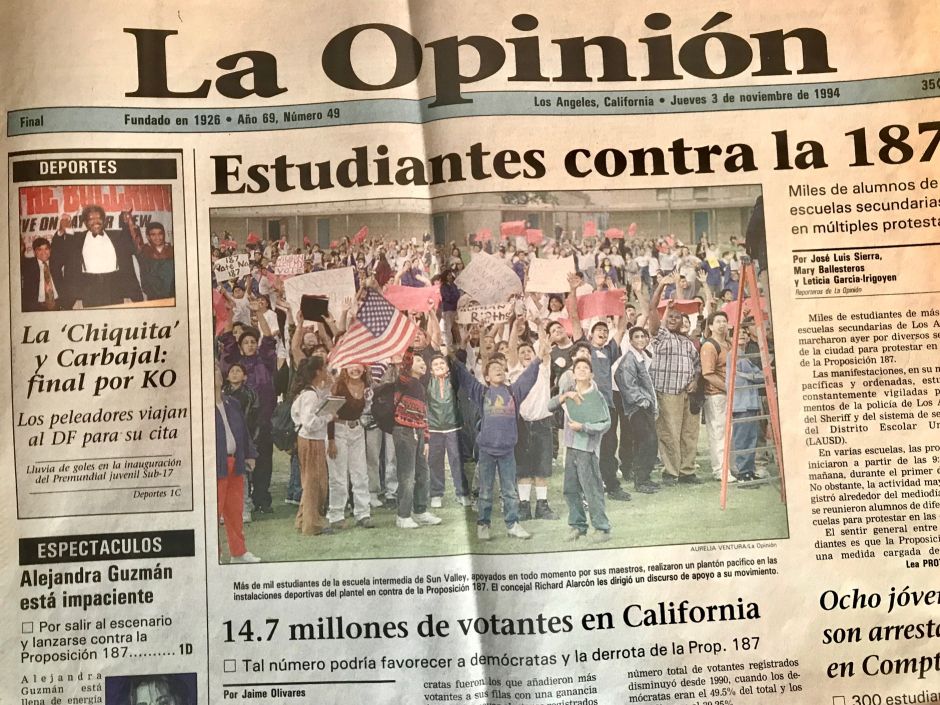Carlos Alfredo obtained a doctorate and is a teacher in political science; Gustavo Arellano is a reporter for the LA Times and has a podcast where he talks about the Latino community

It has been 25 years since the controversial Proposition 187 was approved by voters in 1994. California law attempted to criminalize undocumented immigrants by denying any medical, educational or public service.
The measure that was eventually defeated in federal court caused Latino youth and adults to take to the streets in protest.
Six days before the vote, about 10,000 students from some 30 schools in the Los Angeles Unified School District (LAUSD) left their classes to demonstrate against the measure that required verification of legal documents to students and their parents. This terrified immigrant students and citizens of immigrant children in kindergarten schools at the university.
Alfredo Carlos, PhD., A professor of political science and Chicano studies at California State University, Long Beach (CSULB), said that in 1994 he was a high school student in southern Los Angeles. Although he knew little about the law, he felt the nervousness of his parents.
"There were many talks that Governor Pete Wilson did not love immigrants," recalled the professor, Zacatecan by birth, and whose parents emigrated undocumented to the United States.
"With us there was even a plan: if my parents did not come home one day, we had to go with an aunt," said the 39-year-old professor. “I did not understand why if we were human beings they treated us differently. I could not contemplate the idea that my mom and dad could be deported. ”

That is why, without much thought and with the desire to help his family and his community, Carlos, then 14 years old, took to the streets with students from his Stephen White Junior High School, on November 2, 1994.
“There were talks that the students wanted to do‘ walkouts ’(marches)… I didn't know much about politics, nor was I involved as now, but I went out (from school) with the other students,” said the academic. "I can't say we had an elaborate policy (what to do) but I did know that there were many schools involved."
Proposition 187 — written by Assemblyman Dick Mountjoy (R-Monrovia) — occurred at a time when the golden state was going through an economic crisis and Governor Pete Wilson was seeking re-election. With a government led by the Republicans, the governor made the measure one of his main campaign slogans. Finally, on November 8, 1994, 187 was approved at the polls with 59% of the vote.
Changing he fear by activism
That same November 2, 1994, about 35 miles south of Carlos's school, at Anaheim High School, in Orange County, Gustavo Arellano, 15, saw many students leave school during school hours. to protest against Proposition 187.
Arellano, who is now a writer and reporter for the Los Angeles Times, said it was not until a month before the vote on the proposal that he learned what it was.
“I remember that some Americans in a van started yelling at me‘ 187! ”, Arellano said. “I thought,‘ they are crazy ’and when I got home I watched television and saw that it was a racist measure,” said Arellano, of Mexican roots.

It was when fear seized him, since, although he was born in the United States, his father was still undocumented and conversations against this group intensified.
“Many students were in favor of 187. I remember a student of Salvadoran refugee parents who said: 'No to the illegals' and I thought, 'how will you be in favor of 187 if your parents arrived as refugees?' Arellano recalled.
However, when it was time to jump the metal mesh of Anaheim High School to go out to protest the streets, Arellano chose not to leave.
“I think it was out of fear. I thought that if I left, something would happen to my family, ”said the reporter. "I also thought that leaving was not going to make any changes."
It was over the years that he understood what it means to march and protest. Now Arellano is responsible for making his voice heard loud and clear through each article he writes and each interview he offers on radio and television.
The reporter proudly carries his Mexican roots and manifests it in each of the three books he has published on Mexican and Mexican-American culture.
"It's because sometimes you reach a limit where something happens to you and you say,‘ no more. " I said, "We are good people," and I wanted to prove it by going to school and improving my education, ”said the journalist.
Arellano said he finds the fact that the 15-year-old boy who did not march during the protests in 1994 and did nothing for his people now is dedicated to giving voice to the disadvantaged.
"It's like my way of apologizing to that young man for not having left, I want to tell him that everything is fine and my whole career has been only to improve me," said Arellano, who is currently presenting a podcast that talks about 187 in " This is California; The Battle of the 187. "
Cyclic events
Professor Carlos said it is sad to see that 25 years later, immigrants and Latinos continue fighting the same battles.
"The problem of dehumanization for immigrants was not only in 1994," said the professor.
These heartbreaking events have occurred in the 1980s when more funds were provided for immigration agents, as well as militarization at the border under the leadership of President Ronald Reagan. In the 50s and 60s more than one million Mexicans were deported with the “Operation Wetback”. And in the 1930s with the repatriation of hundreds of thousands of Mexicans, many of whom were US citizens.
"It is part of the economic system that when we need we bring immigrants to work and when there are problems we blame them," said Professor Carlos, adding that this makes immigrants considered a "disposable demography."
For his part, Arellano said that despite the bad things California has faced, he finds it rewarding to see the response of Californians
"Now we are a blue state and a sanctuary state," he said, ensuring that fighting against what is not considered fair is our duty. “I tell young people that there is always hope. If there are young people or adults who look at something and do not like it, they should improve it. There must be no fear. ”









